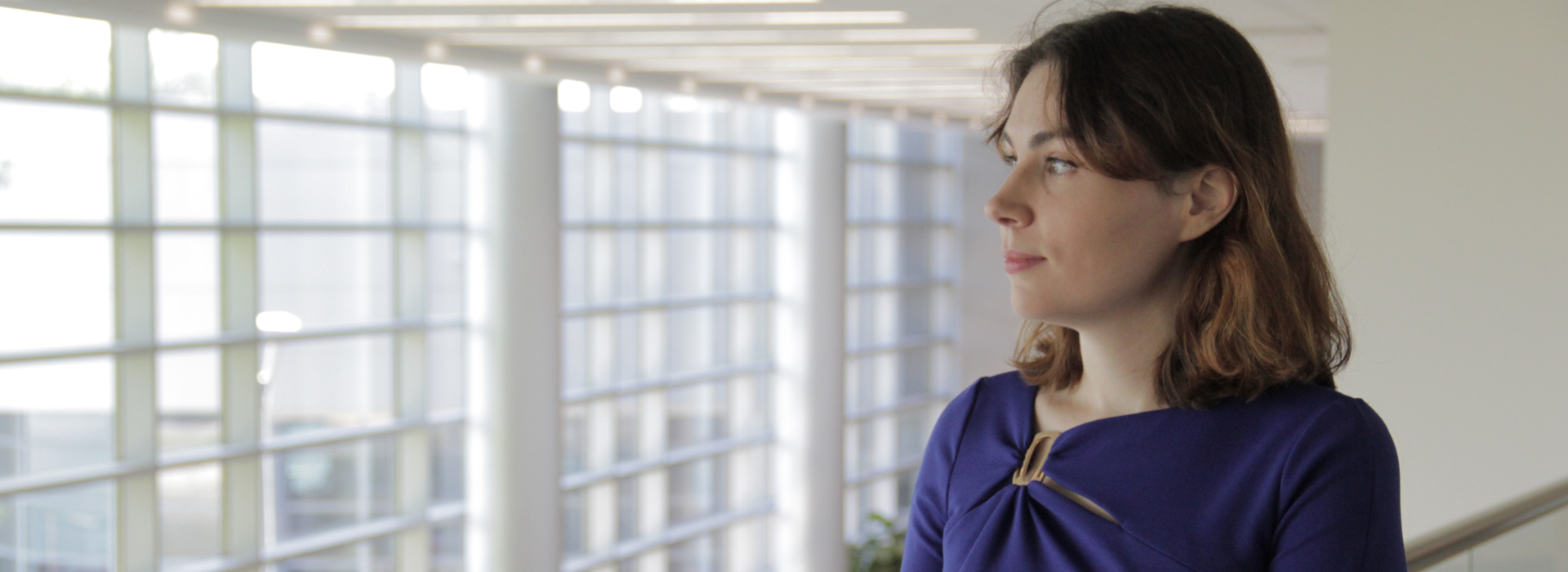For people with a different way of thinking, a different approach to hiring
July 20, 2022 | By Deborah Abrams Kaplan
Alecia Thomas, a junior software developer, gets nervous before job interviews. Typically, an employer will give the prospective programmer a 30-minute interview followed by just 30 minutes to write out code and explain what she’s doing.
Thomas, who has autism and attention-deficit/hyperactivity disorder, struggles with this format because, as she says, “It is difficult to explain my work within a certain time limit.” Thomas has a slower processing speed because she can’t filter out all the details in her environment. Her “time blindness” makes it more challenging to focus. “When there is someone watching me, their movement catches my eye and breaks my concentration,” she says.
When she interviewed for a position at Mastercard, the Florida native found the experience far less harrowing. She worked with the nonprofit Neurodiversity in the Workplace to prepare, which helped her better explain her thought process, and then she interviewed with Mastercard virtually over the course of a week rather than a single afternoon. Thomas’s interviewer provided detailed instructions but allowed her to choose how to showcase her work. And she only had to withstand the emotional intensity of one-on-one interviews for a few minutes.
Thomas is one of the 1.2 billion individuals who identify as being neurodiverse, a term that refers to people who think differently than the majority of people, who are considered neurotypical. The neurodiverse umbrella includes autism, ADHD, dyslexia and learning differences. An estimated 1 in 44 children in the United States are diagnosed with autism. Almost half of 25-year-olds with autism have never held a paid job, largely because few workplaces know how to meet their needs.
Mastercard recently introduced a pilot program geared to employ more neurodiverse people. The program is just one of the ways in which the company is actively designing the workforce of the future, aiming to level the playing field by creating more equitable access to opportunities and opening new pathways to sourcing diverse talent.
For Thomas and the other candidates interviewed through the pilot, these accommodations made all the difference. Last August, she and three candidates who took part in the pilot were hired, and now Thomas works as a technology risk analyst at the company’s operations center in O’Fallon, Missouri.

Thomas’ manager, Amanda Gioia, is the mother of a child on the autism spectrum, and she understands the challenges people like Thomas face in the workplace, which inspired her to help launch the pilot last year.
“I was thinking about how critical it is that we do a better job of allowing people to bring their whole selves to work, especially when it comes to neurodiverse individuals,” says Gioia, vice president for technology risk management in Risk Operations. “Doing so encourages better, more holistic conversations across the organization when it comes to the work we do and the customers we support.”
So she reached out to the company’s global Diversity, Equity and Inclusion office and the Talent Acquisition team to develop the pilot. To get it right, they fine-tuned its structure with Disability:IN and Neurodiversity in the Workplace, nonprofit organizations specializing in disability inclusion in corporations, and recruited managers within the company known for their coaching skills.
As the company has grown and opened new Tech Hubs around the world, it is taking the needs of people with neurodiversity into account when designing the spaces. The company’s European Tech Hub in Dublin, which opened in April, features micro-environments where people can find the right level of stimulation, be it visual, auditory or physical.
Other Tech Hubs, including those in O’Fallon, Arlington and New York City, were also designed with neuro-inclusion in mind, featuring designated quiet zones and comfort zones with calming, dimmable lighting and sound-masking acoustics. As with many accommodations that begin with a desire to solve specific challenges, these spaces also benefit neurotypical people.
With a strong program in place, Gioia sold the idea to her colleagues, highlighting what Mastercard had to gain by hiring more people on the autism spectrum.
“This pilot program is unique in that we’ve not done anything like it before, but it’s also very true to who Mastercard is as a brand and the culture that we foster here, one where decency and inclusion are core values,” says Arlene Gonzalez-Pagan, vice president of Diversity, Equity and Inclusion at Mastercard. “Recruiting neurodiverse talent is also just the smart thing to do, as the diversity of our employee base and different perspectives lead to greater innovation. Ultimately, it’s better for business.”
So far, Thomas is enjoying her job and eventually wants to move into the compliance monitoring program, which only hires senior developers. “I knew Mastercard was a really good place, because I knew someone who worked for the company,” she says. “I really like that people are being more accepting of neurodiverse people, including Mastercard.”
Banner photo: Alecia Thomas at Mastercard's O'Fallon operations center. (Photo credit: Mira Belgrave)